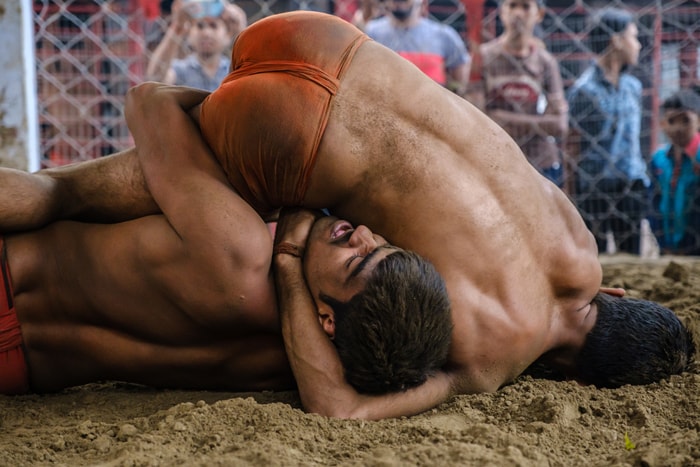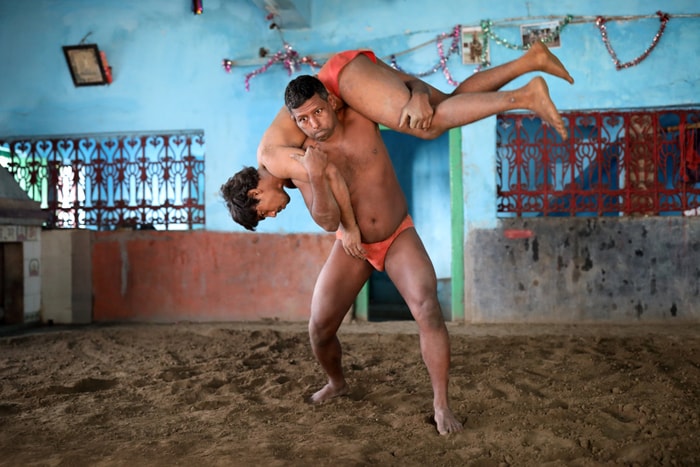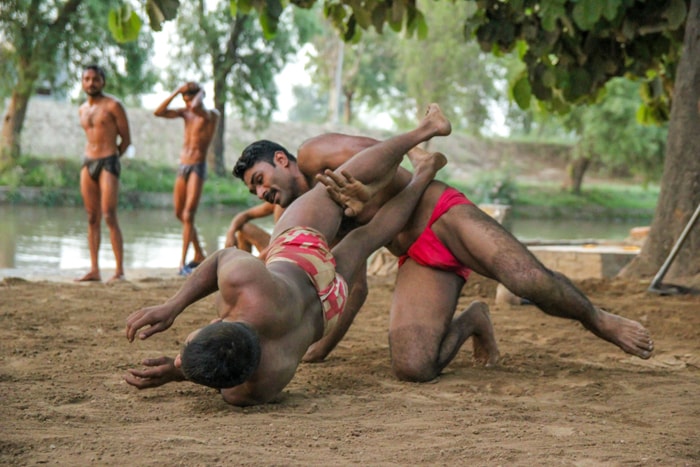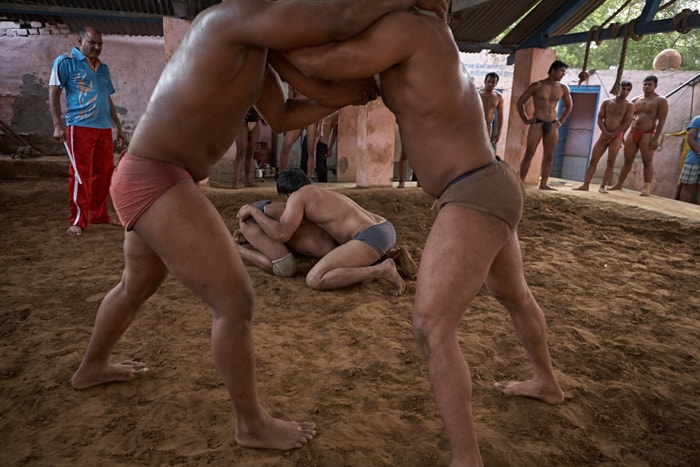Kushti: The Rise of the Mud Wrestler, a Great Indian Tradition
Kushti is the ancient martial art of mud wrestling that has been exciting crowds across the Indian Subcontinent for centuries. In this unique sport, two wrestlers grapple in a test of endurance and skill in an attempt to pin each other to the ground. The muddy environment makes Kushti unique, as wrestlers must fight with an intensity like no other. Kushti is built on athleticism, tradition, and raw energy, and it often delivers on the promise of a real fight.
The world of Kushti is uncompromising and offers an experience you will never forget, redefining what it means to be a wrestler. In this post, we will dive deep into this exciting Indian sport!
The History and Traditions of Kushti

The art of Kushti wrestling boasts a rich and storied history, deeply rooted in the cultures of ancient India and Persia. It is often referred to as “Pehlwani,” a name taken from the Persian language that reflects the sport’s historical ties to Persia. It is believed that Kushti was the creation of blending the ancient Indian wrestling style of Malla-yuddha and Koshti pahlevani together to create the martial art of Kushti that we see in India today.
The Mughal Empire in the 16th century, particularly during the reign of Babur, was an evidential time for the early practice of Kushti. Babur, the founder of the Mughal Empire in India, was known for his interest in various forms of physical combat and martial arts, which included wrestling. His reign marked a period of cultural amalgamation, where Persian influences mingled with Indian traditions, this further enriched the practice of Kushti.
Babur’s appreciation for wrestling helped in popularizing and refining Kushti, as it became a favored pastime in the royal courts. This royal endorsement contributed to Kushti’s enduring legacy as a celebrated and respected sport in the Indian subcontinent.
The trend for the support of Kushti continued in the Maratha Empire, which was a powerful Indian state that existed from the late 17th century to the early 19th century and played a big role in Kushti history. The Marathas had a strong warrior culture and considered Kushti as an essential part of their training and lifestyle. Kushti was also a part of military training for Marathas, and they believed it helped build strength, agility, and endurance.
Kushti was deeply rooted in Maratha society, many families and communities had their own akhaaras where young men would train and compete. Maratha patronage of Kushti made it more popular, and the sport took a more permanent place in Indian culture during that time. Women also began competing in Kushti during the Maratha reign.
Another legendary figure in the history of Kushti is Ghulam Mohammad Baksh Butt, also known as ‘The Great Gama.’ Renowned for his unparalleled strength and dedication, Gama’s legacy as one of the greatest wrestlers of all time continues to inspire Kushti wrestlers today.
In more recent history, Kushti is still fairly popular. Kushti wrestlers have competed in both the Asian Games and the Commonwealth Games.
The World of Mud Wrestling

Kushti wrestling is a form of grappling that involves physical contact between two wrestlers. These are competitive matches where wrestlers grapple in the mud for 30 minutes, more intensity than many modern sports. Kushti wrestlers compete in a physical contest to throw each other to the ground or force each other to submit.
The sport is also commonly known as “mud wrestling” and “Pehlwani” and is a popular form of entertainment in India and the Indian Subcontinent. Kushti wrestling is a way of life that requires rigorous discipline, the lifestyle of a wrestler is considered to be a lifelong quest to become the best. This can be compared to other combat sports, although wrestling in mud may seem playful, the sport is actually taken very seriously and competed at a high level.
Kushti matches are won by a wrestler pinning their opponent to the ground, this is done by using traditional wrestling techniques, but it is made more complex by the muddy environment. In essence, the moves used in Kushti are similar to those of Greco Roman wrestling, but the muddy environment adds a new level of ruggedness not found in other grappling styles.
Kushti wrestlers compete in a unique and traditional environment that is the very essence of the sport. The arena is called an “akhaara” and is a circular or rectangular pit filled with soft, moist clay or dirt. The clay is prepared to perfection to create the ideal wrestling surface. This is not just any dirt, it’s a special mixture often enriched with lemon and turmeric, which is believed to help the wrestler heal better. The clay is turned and watered regularly to keep it pliable and provides a cushion to prevent injuries during intense grappling.
The earthy smell and feel of the akhaara is an integral part of the Kushti experience, it connects the wrestler to the tradition and spirituality of this ancient sport. The natural environment challenges the wrestler to adapt his techniques as the slippery mud adds an extra layer of complexity to his moves and requires skill and strategy to win.
Kushti vs. Other Grappling Styles

Messy and muddy isn’t something you would associate with other styles of grappling. The majority of wrestling styles in the west, such as Greco Roman Wrestling or Folksytle Wrestling, are practiced very differently to this, as wrestlers need a specific uniform and are competed with stricter rules on clean mats. This leaves little room for distractions and allows wrestlers to focus purely on the technical aspects of the match.
Kushti adds in a completely unique element of mud, meaning wrestling fans have to be cautious not to get it in their eyes or let it distract them from the goal of winning the match. The most comparable style of wrestling would be Turkish Oil Wrestling, as they both use a natural substance that changes the traditional wrestling environment into something more complex. However, Turkish Oil Wrestling makes wrestlers more slippery, and the dirt or mud used in Kushti often makes the wrestler have more friction or grip between their bodies.
Training and Diet for Kushti Wrestlers

Kushti wrestlers undergo intense physical training, including weightlifting, running, rope climbing, and other forms of exercise. The training regime includes heavy weight lifting and continuous wrestling sessions.
Like other forms of wrestling, they aim for both strength and endurance, meaning strength and conditioning training is crucial to their preparation. One typical day of training usually starts around 6 am and includes strength and conditioning training. Later the day goes onto wrestling practice and usually includes an oil massage and rest periods throughout the training day.
It is common for mud wrestlers to train six days a week; this means rest and recovery are very important parts of the lifestyle, as is diet. Propper nutrition ensures a Kushti wrestler can recover well and be at their peak performance.
The diet of Kushti wrestlers usually consists of fruits, milk, and meat, with other foods also consumed by some of them. They usually aim to have a high protein intake as they believe it will help recover their bodies faster. High-fat foods like clarified butter and ghee are also a staple in the diet of Kushti wrestlers.
The Rules and Competitions of Kushti

In Kushti wrestling matches take place in an akhaara, a specially prepared mud or clay pit where two wrestlers try to pin each other’s shoulders to the ground. The match is overseen by a referee and two judges who ensure the wrestlers follow the rules and don’t manipulate the match. Kushti matches can go on for 30 minutes or even 1 hour, and the objective is to dominate your opponent through various grappling techniques and holds.
Wrestlers have to use their strength, technique, and strategy to win, all while dealing with the slippery, muddy surface. Matches are usually won by a pin or submission, meaning the wrestler has to pin his opponent to the ground or make his opponent submit to win.
The Popularity of Kushti Wrestling

Kushti wrestling is a popular sport in India, with many wrestlers training for years to perfect their skills. However, the sport has seen a decline in recent years due to the introduction of more international sports. As with other traditional art forms, Kushti is more popular in rural communities instead of in large cities.
Kushti is a traditional sport, but it has done well to carry itself into the modern world. Hosting regular competitions across India, and women are now participating in Kushti wrestling, breaking traditional norms. We may see a huge rise in popularity for Kushti in the future when the sport reaches the mainstream sports fanbase.
Summary
Kushti is a unique form of wrestling that is full of tradition and culture. The sport is exciting and still relevant in modern-day sports, with Kushti matches being contested all around the Indian Subcontinent. Overall, Kushti mud wrestling is a great discipline, and we hope to see more of this sport in the future.









